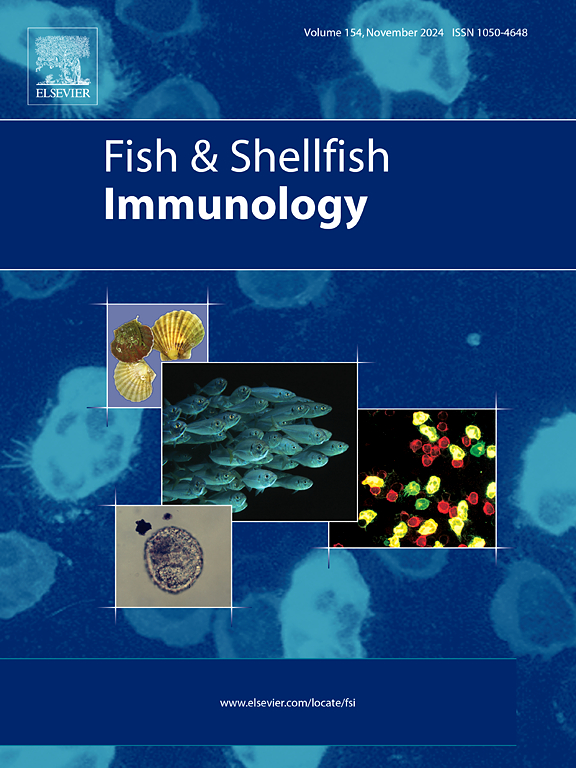Molecular responses of Mytilus coruscus hemocytes to lipopolysaccharide and peptidoglycan as revealed by 4D-DIA based quantitative proteomics analysis
IF 4.1
2区 农林科学
Q1 FISHERIES
引用次数: 0
Abstract
Mytilus are sessile filter feeders that live in close contact with numerous marine microorganisms. Hemocytes, the immunocompetent cells of Mytilus, participate in the immune response in a very efficient manner. Lipopolysaccharide (LPS) and peptidoglycan (PGN) follow specific microbe/pathogen-associated molecular patterns (MAMPs or PAMPs) and are involved in immune stimulation in host cells. This study evaluated the molecular profiles and reactions at protein level of Mytilus hemocytes after stimulation with LPS and PGN. Mytilus coruscus was challenged in vivo with LPS and PGN. The hemocytes were collected after 48 h and analyzed for quantitative proteomics, cell subpopulations, and the free amino acid composition. 4D-DIA technology-based proteomic analysis revealed different protein profiles, as well as different responses at protein level, under either the LPS or PGN challenge. C-type lectins, collagens, and CD151 protein were highly upregulated in LPS-challenged mussels, while phospholipase A2 and dCMP deaminase were highly upregulated in PGN-challenged mussels. Moreover, LPS challenge disrupted dsRNA-mediated translation and stimulated energy-related metabolism, while PGN challenge stimulated proteins involved in the inflammatory response and suppressed amino acid metabolism. In addition, the LPS and PGN challenges differed in their effects on the free amino acid composition and granulocytes ratio of the hemocytes. These findings highlight the different strategies employed by mussel hemocytes in response to different MAMPs, providing insights into the effects of LPS and PGN on Mytilus.
求助全文
约1分钟内获得全文
求助全文
来源期刊

Fish & shellfish immunology
农林科学-海洋与淡水生物学
CiteScore
7.50
自引率
19.10%
发文量
750
审稿时长
68 days
期刊介绍:
Fish and Shellfish Immunology rapidly publishes high-quality, peer-refereed contributions in the expanding fields of fish and shellfish immunology. It presents studies on the basic mechanisms of both the specific and non-specific defense systems, the cells, tissues, and humoral factors involved, their dependence on environmental and intrinsic factors, response to pathogens, response to vaccination, and applied studies on the development of specific vaccines for use in the aquaculture industry.
 求助内容:
求助内容: 应助结果提醒方式:
应助结果提醒方式:


